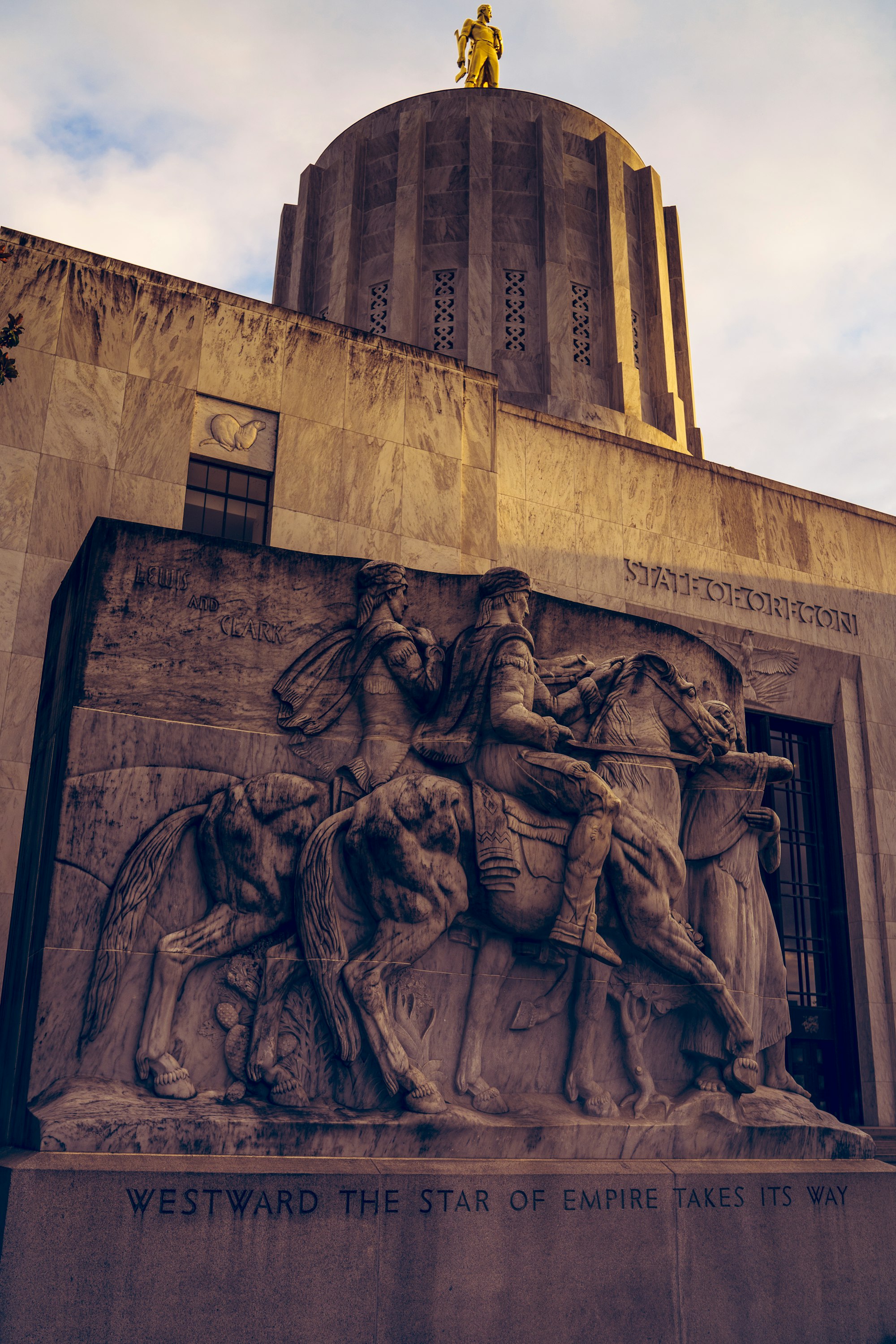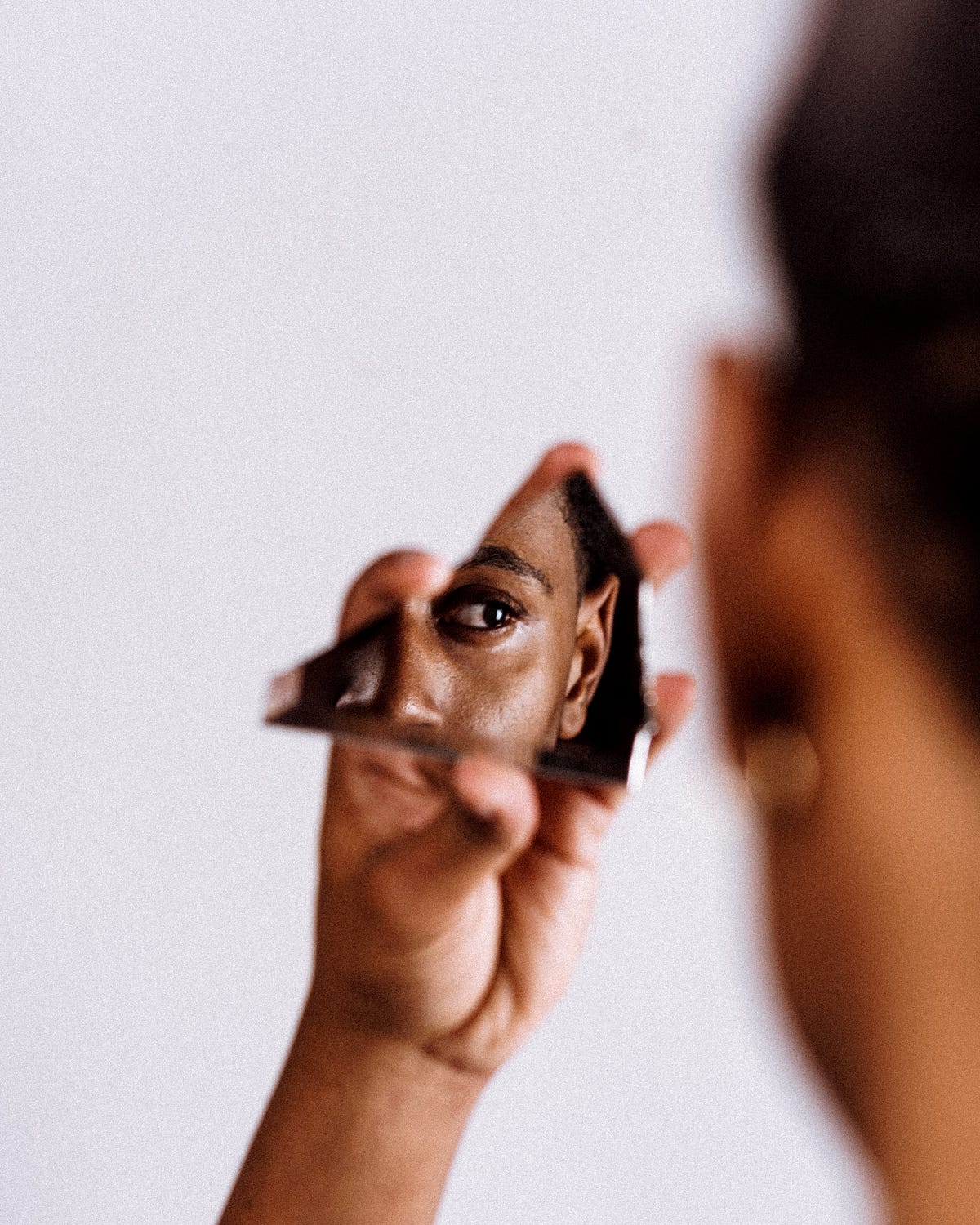Reckoning
Radical changes are required within our social, economic, and political systems that can be the legacy that we leave to the next generation: organizational biomimicry that more efficiently uses resources while understanding the biological and ecological limits of capitalist consumption.

Oregon Capitol Building, Salem, Oregon, USA
Since Oregon's capitol is in the news because some of our senators are throwing a tantrum over efforts to reduce greenhouse gas emissions...I decided to take a few photos of the building since I live a few blocks away. Without commenting on the subject of that sculpture itself, I was trying to capture the beautiful texture of the white marble in the late evening. And no photo of the Oregon Capitol Building is complete without the gold pioneer in frame.
There needs to be a discussion about decolonizing design, if we are reading the room at all. The discussions that I am having about the future of design with people involved with the Buckminster Fuller Institute are about how we model organizational structures to better integrate with the sorts of radical changes that are required within our social, economic, and political systems that can be the legacy that we leave to the next generation: organizational biomimicry that more efficiently uses resources while understanding the biological and ecological limits of capitalist consumption.
Today, after two years on the @typedirectors board, I’m stepping down because the TDC is a racist organization.https://t.co/5qM9aHf29b
— Juan Villanueva (@Juan_Kafka) June 23, 2020

If designers speak for governments, corporations, and, in my case, religious institutions and non-profit organizations, we are part of the machinery that maintains the status quo. The reckoning that the design industry is facing is about a lack of awareness, perhaps, about a colonial system and a corporate hierarchy—from which the design industry benefits—that has been legalized and working so well for 153 years that it seems like bad marketing and PR to acknowledge an announcement from the national inquiry into missing and murdered Indigenous women and girls that Canada has been engaged in a genocide. To put this as mildly as I can, I am uncomfortable with the silence that allows a year to go by without speaking out against a government that continues to use the violence of the state to force a pipeline through Indigenous territory. And, if we were to be honest with ourselves as a nation, we should wonder why Germany continues to educate its population to never forget its history of devolving the democratic Weimar Republic into a fascist dictatorship to build the fastest growing economic engine of its time, yet Canada has a hard time admitting that the RCMP is racist.
I am not denigrating the Graphic Designers of Canada and its hardworking volunteers, who are doing the best they can to advocate for the value of design so that we can continue to have a place at the table with the decision-makers who are the captains of industry and the people who pay our bills.
I have come to understand that designers have failed to recognize their influence, capacity, and agency to collectively and creatively imagine a different way to think of our role in society, not as the mouthpieces of the powerful, but as advocates for the people.
We are the innovators who exist in the tension between the powerful who maintain the government and corporate hierarchies and the people who we serve with our messages, our designs, and our digital infrastructure. What I have come to understand, though, is that we are building social systems.
We haven’t necessarily been given permission to redesign our 153-year-old colonial social system. But, we are actually in the process of rebuilding the same model into our digital infrastructure, based on the business model of advertising, extracting value from the attention of the users of digital products at such a scale that borders have become meaningless for companies such as Facebook, Apple, and Google. However, it is just another form of economic colonization. Whether we recognize it or not, we are building the infrastructure of the future. It just so happens that the future is corporate: authoritarian and undemocratic.
However, we are teaching the next generation to listen, to observe, and to understand, through empathy, how people think and how to make sense of their mental models of the world. Based on these empathy maps, user journeys, and personas, we are building digital tools to solve problems and overcome challenges. The constraints have been artificially imposed by legal and corporate hierarchies who have defined the design brief and the scope of work should be limited to the fine-tuning and design iterations of the existing machinery of capitalist control, based on the model of scarcity, competition, and dominance.
